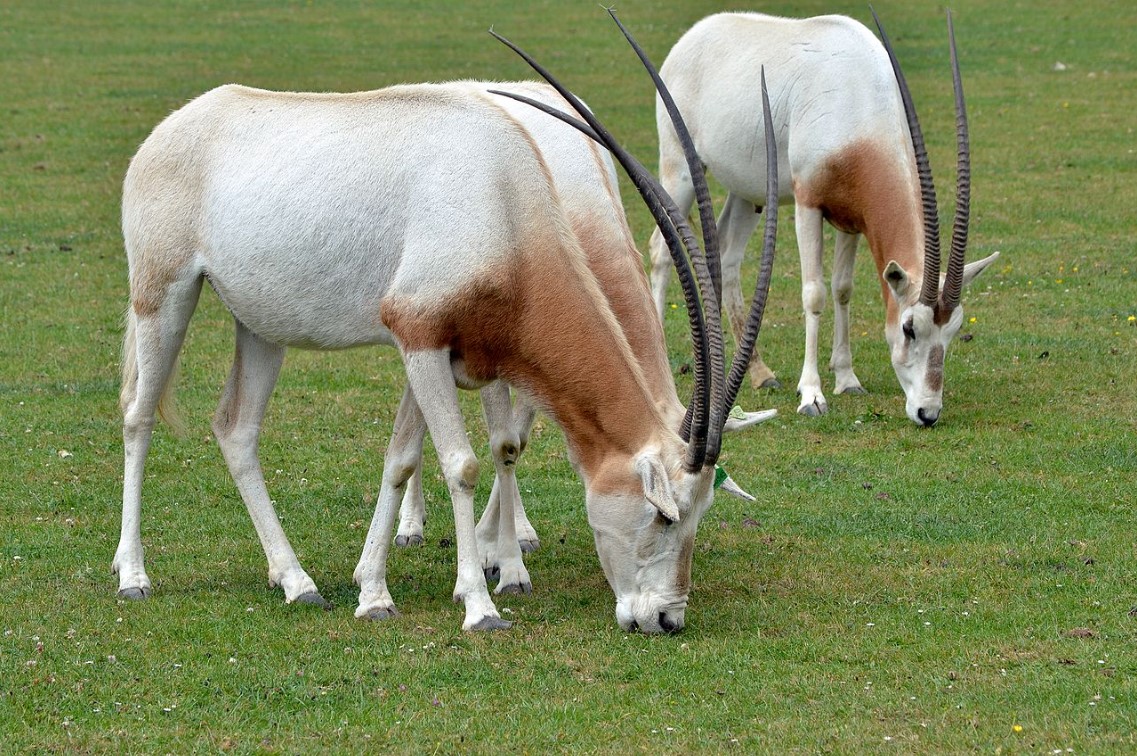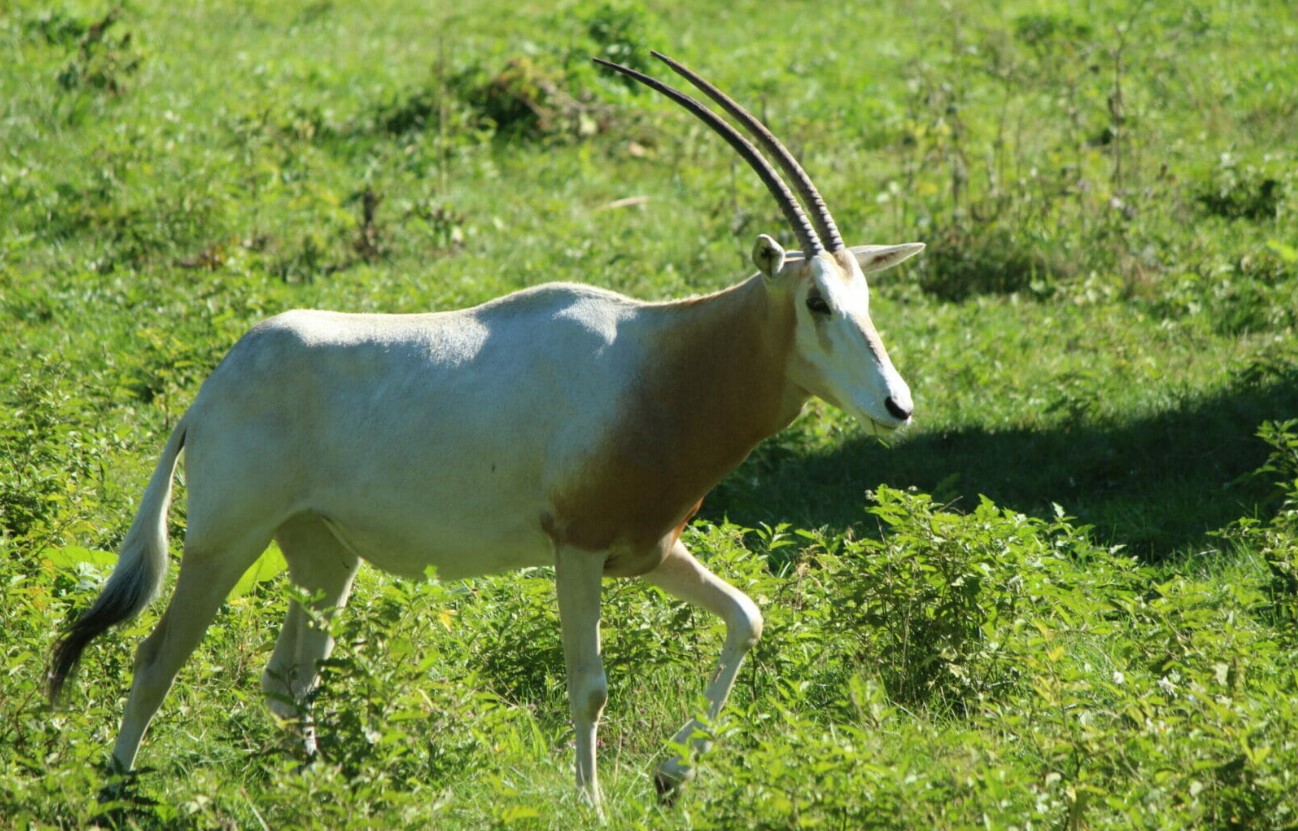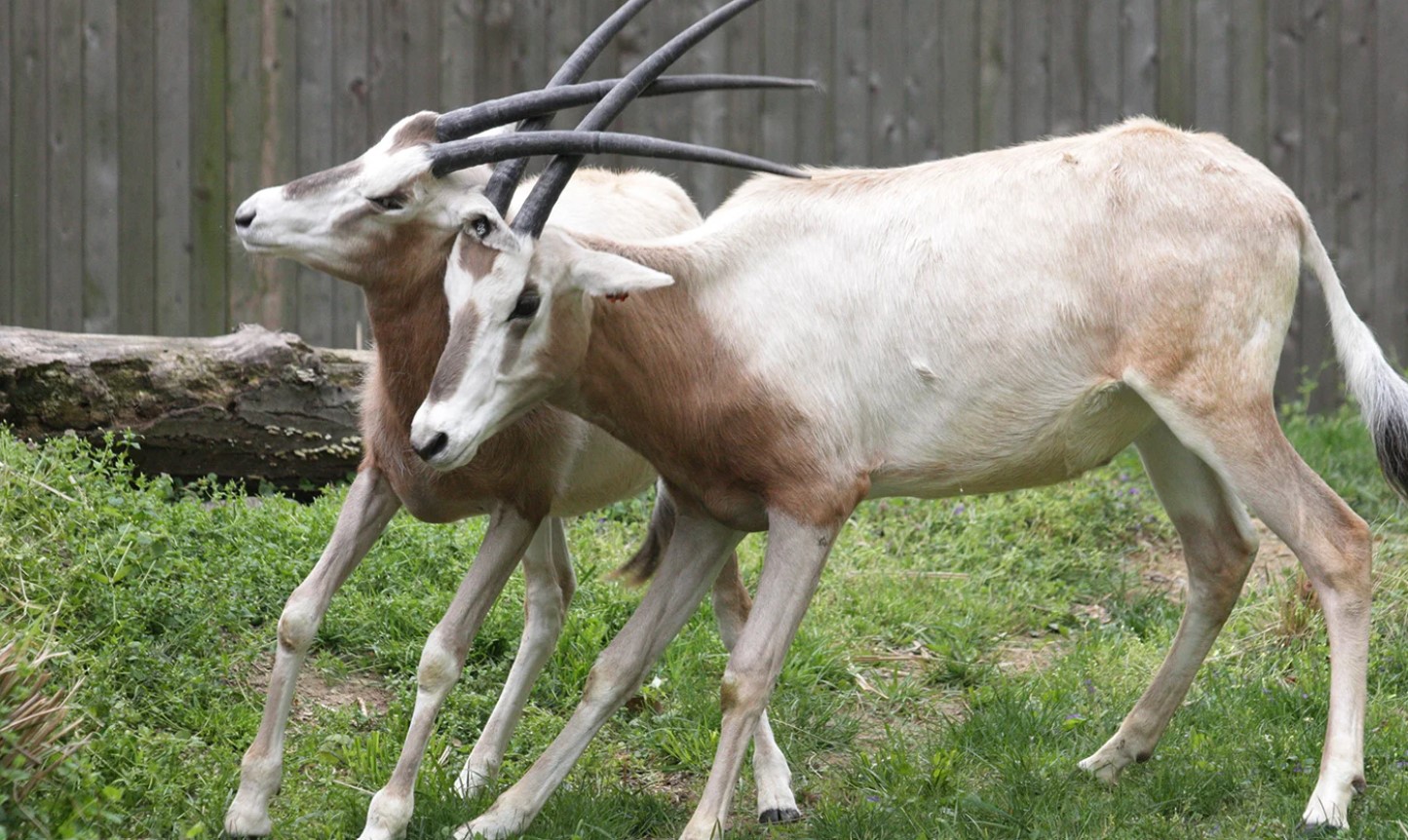





The scimitar-horned oryx(Oryx dammah) is a type of antelope that was once widespread around North Africa but is now Endangered. This species of oryx is also called the scimitar oryx or the Sahara oryx. It was declared Extinct in the Wild on the IUCN Red List in 2000. They mostly live in the deserts and steppes of North Africa with Chad holding 95% of the population, where they can go for long periods without water and can tolerate an internal body temperature of 116 degrees Fahrenheit.
Scimitar-horned oryxes have a black-and-white face mask like other antelopes in the subfamily Hippotraginae which include sable antelopes, roan antelopes, addax, and gemsboks. They are mostly white with russet fur on their necks. The white fur helps reflect the heat of the desert. The coat helps reflect the sun’s rays while the black portions help with protection against sunburn. Calves are born with yellow coats and lack distinguishing marks, which appear later in life. Their pelage changes to adult coloration at 3–12 months old. They also have a long, dark, tufted tail. Both males and females have long, curved backward horns with the females being more slender. They also have large hooves which enable them to walk on sand. The males weigh 140–210 kg and the females 91–140 kg. Males are mostly larger than the females.
These oryxes mostly live in nomadic herds of 10-20 females and their young which are led by a dominant male. They once gathered in groups of several thousand to migrate. They mostly migrated to the Sahara during the wet season. They become inactive in the heat of the day and will both seek shade and dig out scrapes in the sand to reduce exposure to drying winds. They primarily graze at night, unlike other antelopes and oryxes which mostly graze during the day. Courting is done through a mating circle; the male and female stand parallel to one another, facing in opposite directions, and then circle each other until the female allows the male to mount from behind. If the female is not ready to mate, she runs away and circles in the reverse direction. Gestation lasts 9 months and females mostly give birth to a single calf. Twin births are very rare - only 0.7% of the births observed in one study. Both mother and calf return to the main herd within hours of the birth. The female separates herself from the herd for a few hours while she nurses the calf. Weaning starts at 3.5 months, and the young become fully independent around 14 weeks old.
In their desert homes, scimitar-horned oryx mostly eat grass, herbs, shrubs, succulent plants, legumes, juicy roots, buds, and fruit. In the night or early morning, they often search for plants such as Indigofera colutea, which produce a hygroscopic secretion that fulfills water requirements. They eat tuft grasses such as camel grass after rains, but they normally prefer more palatable grasses, such as the Egyptian crowfoot grass.
Scimitar-horned oryxes were listed as Extinct in the Wild in the year 2000. They became extinct due to habitat loss, persistent drought, and also people hunting them for their meat and horns. A global captive breeding program for this species formed and has existed for a long time. The first release, consisting of 23 individuals bred in captivity, began in 2016. This release and others aimed to steadily increase the number of animals in Chad over the next few years, and by May 2021 there were more than 360 semi-wild oryx. Many American and European zoos still exhibit and breed these animals to make sure there are captive populations suitable for release. In 2023, IUCN officially raised the status of scimitar-horned oryx from "extinct in the wild" to "endangered." This critical milestone is an example of the success that can come from focused conservation efforts.
The only tip I would recommend for helping this animal is to visit zoos accredited by the Association of Zoos and Aquariums(AZA). These zoos participate in breeding programs and the money that you spend will also fund wildlife conservation.